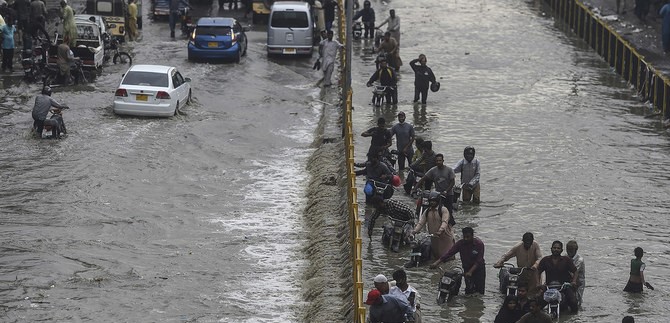The National Emergency Operations Center has issued an alert, warning that the current monsoon system could impact Sindh within the next 12 to 24 hours.
Regions such as Kashmore, Karachi, Hyderabad, Thatta, Umerkot, Badin, Mithi, and Tharparkar are expected to experience localized urban flooding and moderate inundation in streams and nullahs due to anticipated rainfall.
Residents in vulnerable areas are urged to follow local authorities’ instructions to mitigate flood risks.
Yesterday, Sindh Chief Minister Murad Ali Shah directed the irrigation department to prepare an emergency plan for potential river flooding.
Shah emphasized the need for proper coordination among law enforcement agencies, the Pakistan Navy, and all relevant departments to promptly address any emergency situations.
He outlined various factors influencing monsoon rains in the country, including sea surface temperatures (SSTs) in the Pacific and Indian Oceans, the subtropical high/Tibetan high (STH/TH), the tropical easterly jet (TEJ), heat low-pressure areas, low-level jets (LLJ), the Madden-Julian Oscillation (MJO), and the Indian Ocean high (IOH) pressure area.
The National Emergencies Operation Center of NDMA had earlier on Saturday also forecasted flash floods in local streams and nullahs in Punjab, including Islamabad, Rawalpindi, Sialkot, Narowal, Murree, Galliyat, Kohistan, Abbottabad, Dir, Swat, Kashmir, and the hill torrents of D.G. Khan and Rajanpur.
Urban flooding is anticipated in major cities including Lahore, Sialkot, Narowal, Gujranwala, Faisalabad, Rawalpindi, and Peshawar. Similar risks extend to Dir, Swat, Kashmir, and Dera Ghazi Khan.




